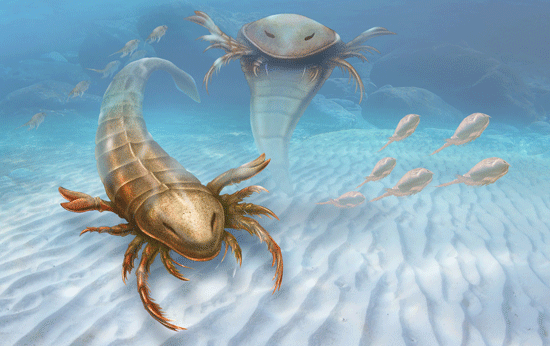

Ny-Alesund, Norway: When it comes to coping with climate change in the Arctic region, which is warming at three times the global average, some animals are more equal than others.
Migrating Barnacle geese that fly north to lay eggs amid the Norwegian Arctic’s craggy peaks and melting glaciers are adapting very well, thank you, at least for now.
Reindeer, foxes and polar bears, however, are having a harder time of it. Just finding enough to eat can be a struggle.
The geese — which leave Scotland each year by the thousands — have come like clockwork since time immemorial in the Spring to Spitsbergen and other islands in the Svalbard archipelago to nest.
Until, that is, a few years ago.
“In 2007 they suddenly pushed forward their 3,000km trip by two weeks and it’s been that way ever since,” said Maarten Loonen, a Dutch ornithologist who studies the archipelago.
The revised travel schedule does not seem to pose a problem. Indeed, the number of goslings that hatch each season has more than doubled in two decades, from 15,000 to some 35,000.
But experts caution that the geese may be thriving in spite of climate change, not because of it: their growing numbers, they suspect, are mainly due to strict European conservation laws.
The Arctic has warmed more than any other region on Earth, an amplifying effect linked to sea ice loss and changes in atmospheric and ocean circulation.
In December, 195 nations will gather in Paris with a mandate to forge a planet-saving climate pact. Their goal: prevent average global temperatures from rising more than two degrees Celsius above pre-industrial levels.
On Svalbard, temperatures shot up an average of 2.5 degrees Celsius (4.5 degrees Fahrenheit) over the last century, far exceeding the global increase of 0.8 C since the pre-industrial era.
Other animals have not managed to adapt as well as the geese to these rapid changes.
The freezing rain that often falls now instead of snow, for example, is making it harder for foxes and reindeer in Svalbard to get a meal.
The animals cannot break through the frozen rain to reach their food supplies. “During winter the foxes sometimes have trouble accessing their stockpiles of gosling cadavers that they buried in reserve,” said Loonen.
Svalbard reindeer, which eat lichen and moss, have hoofs designed by evolution to clear the snow off their food supply in winter. But against ice, they are useless.
For now, reindeer, fox and geese populations in the Arctic are all stable, according to the International Union of Nature, which tracks at-risk species.
But scientists are tracking them carefully for signs of trouble.
The travails of polar bears, which no longer have as many floating ocean perches from which to hunt seals, has been well documented.
This shrinking hunting ground may be one reason they have taken to scarfing down the ready supply of goose eggs, a high-protein snack for the lumbering carnivores. Their new foraging habits have also brought polar bears into closer contact with humans, who they slightly outnumber here.
Svalbard — one-and-a-half times the size of Switzerland — is home to some 3,000 polar bears and 2,500 homo sapiens.
AFP